
The Heartbeat of Adelaide: Adelaide CBD
Discover the vibrant heart of Adelaide with its rich history, diverse culinary scene, cultural landmarks, and bustling markets in the Adelaide CBD.
Adelaide Central Business District (CBD) is the vibrant heart of South Australia's capital city. This bustling hub blends modern sophistication with historic charm, offering a unique experience for every visitor. As you wander through its streets, you'll encounter an array of architectural marvels, from the grand Adelaide Town Hall to the cutting-edge designs of contemporary skyscrapers. The CBD is a paradise for food lovers, boasting a diverse culinary scene that includes everything from fine dining restaurants to bustling food markets. The Adelaide Central Market, one of the largest fresh produce markets in the Southern Hemisphere, is a must-visit for its gourmet delights and vibrant atmosphere. Additionally, Rundle Mall, the city's premier shopping destination, offers a mix of high-end boutiques and popular retail chains. Culture enthusiasts will find plenty to explore with the Art Gallery of South Australia, the South Australian Museum, and the State Library all within walking distance. Don't miss a leisurely stroll through the leafy Adelaide Park Lands that encircle the CBD, providing a tranquil escape from the urban frenzy. Whether you're interested in history, culture, shopping, or simply soaking in the lively ambiance, Adelaide CBD has something to offer everyone.
Local tips in Adelaide CBD
- Visit the Adelaide Central Market early in the morning to avoid the crowds and get the freshest produce.
- Take a free guided tour at the Art Gallery of South Australia to gain deeper insights into the exhibits.
- Use the free city tram service to easily navigate around the CBD without any cost.
- Check out the local events calendar as the CBD frequently hosts festivals, markets, and cultural events.
- Explore the Adelaide Park Lands for a peaceful break; they are perfect for a picnic or a leisurely walk.
The Heartbeat of Adelaide: Adelaide CBD
Adelaide Central Business District (CBD) is the vibrant heart of South Australia's capital city. This bustling hub blends modern sophistication with historic charm, offering a unique experience for every visitor. As you wander through its streets, you'll encounter an array of architectural marvels, from the grand Adelaide Town Hall to the cutting-edge designs of contemporary skyscrapers. The CBD is a paradise for food lovers, boasting a diverse culinary scene that includes everything from fine dining restaurants to bustling food markets. The Adelaide Central Market, one of the largest fresh produce markets in the Southern Hemisphere, is a must-visit for its gourmet delights and vibrant atmosphere. Additionally, Rundle Mall, the city's premier shopping destination, offers a mix of high-end boutiques and popular retail chains. Culture enthusiasts will find plenty to explore with the Art Gallery of South Australia, the South Australian Museum, and the State Library all within walking distance. Don't miss a leisurely stroll through the leafy Adelaide Park Lands that encircle the CBD, providing a tranquil escape from the urban frenzy. Whether you're interested in history, culture, shopping, or simply soaking in the lively ambiance, Adelaide CBD has something to offer everyone.
Iconic landmarks you can’t miss
Adelaide Botanic Garden
Explore the lush landscapes and diverse flora of the Adelaide Botanic Garden, a tranquil oasis in the heart of South Australia's capital.

South Australian Museum
Discover the rich biodiversity and cultural heritage of Australia at the South Australian Museum, a must-visit destination for curious minds.

Art Gallery of South Australia
Explore the Art Gallery of South Australia, home to a vast collection of Australian and international art in the heart of Adelaide's cultural precinct.

Victoria Square
Discover Victoria Square, a vibrant park in Adelaide, blending nature, culture, and history for an unforgettable experience.
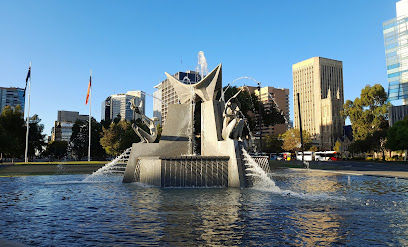
Adelaide Himeji Garden
Discover the serene beauty of Himeji Garden in Adelaide, a tranquil escape showcasing exquisite Japanese landscaping and cultural charm.

Adelaide Gaol
Discover the haunting stories and rich history of Adelaide Gaol, a former prison turned museum in South Australia, offering a unique glimpse into the past.

Light Square
Explore Light Square, a tranquil city park in Adelaide that combines natural beauty with rich history, perfect for relaxing strolls and picnics.

National War Memorial
Discover the National War Memorial in Adelaide, a poignant tribute to Australian heroes and a historical landmark that enriches your travel experience.

Beehive Corner
Explore the historic Beehive Corner in Rundle Mall, an architectural gem and vibrant hub of shopping and dining in Adelaide.

Anzac Centenary Memorial Walk
Explore the Anzac Centenary Memorial Walk in Adelaide, a serene tribute to the courage of soldiers, blending history, beauty, and reflection in one destination.
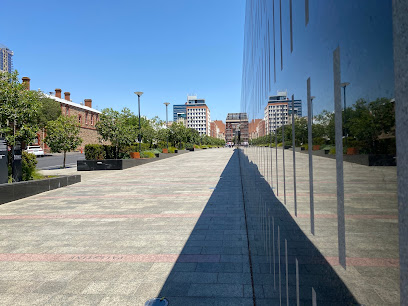
Unmissable attractions to see
Victoria Square
Explore Victoria Square, Adelaide's urban oasis featuring lush greenery, art, and community events in the heart of South Australia.

Adelaide Himeji Garden
Explore Adelaide's Himeji Garden, a serene Japanese-inspired oasis perfect for relaxation, scenic walks, and cultural appreciation.

Botanic Park
Discover the tranquility of Botanic Park in Adelaide, a lush escape filled with vibrant gardens and serene pathways perfect for relaxation.
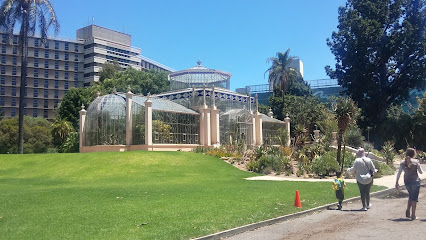
Light Square
Experience the tranquility of Light Square, a beautiful city park in Adelaide, blending history, culture, and nature for a perfect urban escape.

Clipper Ship City of Adelaide
Explore the Clipper Ship City of Adelaide, a historic maritime landmark revealing the tales of Australia's seafaring past amidst stunning waterfront views.

River Torrens
Explore the picturesque River Torrens in Adelaide, a serene destination for leisure, recreation, and cultural events amidst stunning natural beauty.

Essential places to dine
Osteria Oggi
Savor authentic Italian cuisine at Osteria Oggi in Adelaide - where tradition meets contemporary flair for an unforgettable dining experience.

Part Time Lover
Experience unique flavors at Part Time Lover, Adelaide's culinary hotspot offering an inviting atmosphere and diverse menu options.

Peel St
Experience the vibrant flavors of Modern Australian cuisine fused with Asian and Eastern European influences at Peel St in Adelaide.

Africola
Experience bold flavors and vibrant culture at Africola, one of Adelaide's top dining destinations offering African-inspired cuisine.

Chianti
Experience authentic Italian cuisine at Chianti in Adelaide—where every dish tells a story of tradition and flavor.

Parlamento
Experience authentic Italian cuisine at Parlamento in Adelaide – where tradition meets flavor in every dish.

Press* Food & Wine
Experience exquisite dining at Press* Food & Wine in Adelaide – where local flavors meet international culinary artistry.

GEORGES
Experience authentic Mediterranean cuisine at Georges in Adelaide – where every dish tells a story of tradition and flavor.

Delicatessen Kitchen & Bar
Experience exquisite French cuisine at Delicatessen Kitchen & Bar in Adelaide - where culinary artistry meets vibrant cafe culture.
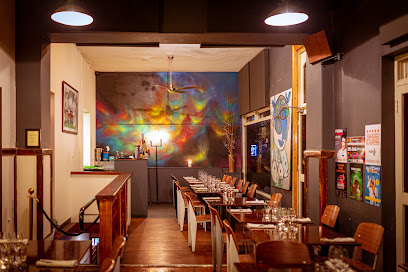
Jolleys Boathouse
Discover exquisite dining at Jolleys Boathouse – where stunning river views meet exceptional cuisine in Adelaide.

Markets, malls and hidden boutiques
Rundle Mall
Rundle Mall: Adelaide's vibrant shopping hub featuring over 300 stores, diverse dining options, and lively cultural events.
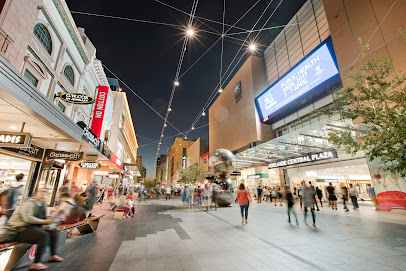
Myer Adelaide
Shop at Myer Adelaide for a diverse range of fashion, homewares, and gifts in the heart of Rundle Mall, perfect for every tourist’s shopping spree.

Myer Centre Adelaide
Explore Myer Centre Adelaide, a vibrant shopping mall in the heart of the city, offering diverse shops, dining, and an unforgettable shopping experience.

Adelaide Arcade
Adelaide Arcade: A historic shopping haven blending unique boutiques, delightful cafes, and stunning architecture in the heart of Adelaide.

Midwest Trader
Explore Midwest Trader in Adelaide for an unforgettable vintage clothing experience filled with unique styles and rich fashion history.

Australia the Gift - Australian Souvenir & Gifts Store
Explore Australia the Gift in Adelaide for unique souvenirs and authentic Australian goods that capture the spirit of Oz.
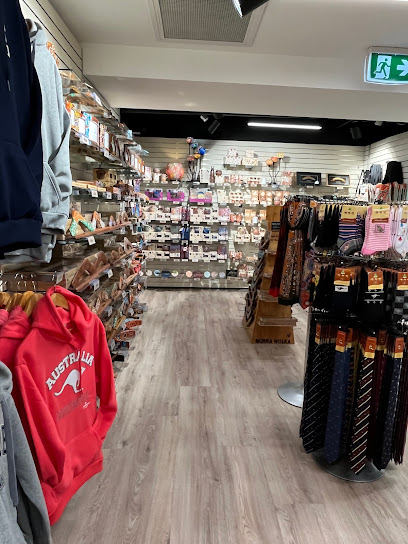
Have You Met Charlie?
Explore the quirky charm of 'Have You Met Charlie?' gift shop in Adelaide Arcade, where unique treasures and local artistry await every visitor.

Essence of Australia
Discover authentic Australian souvenirs at Essence of Australia, where culture meets craftsmanship in the heart of Adelaide Arcade.

Push Pin Boutique Vintage
Explore a curated collection of vintage clothing and accessories at Push Pin Boutique Vintage, the ultimate destination for unique fashion in Adelaide.

VintageMuse
Explore VintageMuse in Adelaide Arcade for a curated collection of unique handbags that blend timeless elegance with modern flair.

Essential bars & hidden hideouts
2KW Bar & Restaurant
Experience exquisite dining and breathtaking views at 2KW Bar & Restaurant, Adelaide's premier location for culinary delights and vibrant atmosphere.

Hains & Co
Experience the nautical charm of Hains & Co, Adelaide's premier cocktail bar, where creativity meets coastal inspiration.

Union Hotel - Best Pub in Adelaide
Union Hotel in Adelaide is the ultimate pub experience, offering delicious Australian cuisine, local beers, and a vibrant atmosphere perfect for relaxation.
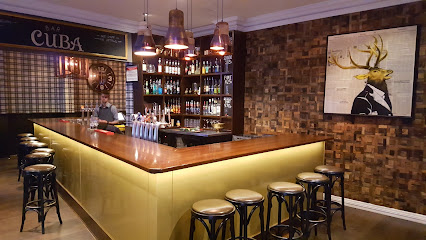
Maybe Mae
Explore Maybe Mae, Adelaide's stylish bar known for its creative cocktails and vibrant atmosphere, perfect for nightlife enthusiasts.

The Howling Owl
Experience the vibrant atmosphere of The Howling Owl, a premier bar in Adelaide offering cocktails, café fare, and a unique event venue.

Mr. Goodbar
Discover Mr. Goodbar, Adelaide's premier cocktail bar, renowned for its unique drinks and vibrant nightlife experience that captivates both locals and visitors.

Proof Bar
Discover Proof Bar: Adelaide's premier destination for craft cocktails and a lively nightlife experience in the heart of the city.

Pink Moon Saloon - Bar and Cocktails
Experience Adelaide's vibrant nightlife at Pink Moon Saloon, where expertly crafted cocktails meet a stylish and inviting atmosphere.
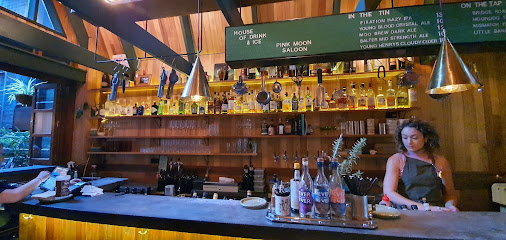
Therapy Cocktail Bar
Discover the art of mixology at Therapy Cocktail Bar in Adelaide, where every sip tells a story of flavor and creativity.

Clever Little Tailor
Discover Clever Little Tailor, Adelaide's charming cocktail and wine bar, offering a cozy atmosphere and exquisite drink selections.

Local Phrases
-
- HelloG'day
[G'day] - GoodbyeSee ya
[See ya] - YesYeah
[Yeah] - NoNah
[Nah] - Please/You're welcomePlease/Ta
[Please/Ta] - Thank youCheers
[Cheers] - Excuse me/SorrySorry
[Sorry] - How are you?How ya goin'?
[How ya goin'?] - Fine. And you?Good. You?
[Good. You?] - Do you speak English?You speak English?
[You speak English?] - I don't understandI don't get ya
[I don't get ya]
- HelloG'day
-
- I'd like to see the menu, pleaseMenu, please
[Menu, please] - I don't eat meatNo meat for me
[No meat for me] - Cheers!Cheers!
[Cheers!] - I would like to pay, pleaseBill, please
[Bill, please]
- I'd like to see the menu, pleaseMenu, please
-
- Help!Help!
[Help!] - Go away!Bugger off!
[Bugger off!] - Call the Police!Police, now!
[Police, now!] - Call a doctor!Doctor, quick!
[Doctor, quick!] - I'm lostLost
[Lost] - I'm illSick
[Sick]
- Help!Help!
-
- I'd like to buy...I wanna buy...
[I wanna buy...] - I'm just lookingJust browsing
[Just browsing] - How much is it?How much?
[How much?] - That's too expensiveToo pricey
[Too pricey] - Can you lower the price?Can you do it cheaper?
[Can you do it cheaper?]
- I'd like to buy...I wanna buy...
-
- What time is it?What's the time?
[What's the time?] - It's one o'clockIt's one
[It's one] - Half past (10)Half ten
[Half ten] - MorningMorning
[Morning] - AfternoonArvo
[Arvo] - EveningEvening
[Evening] - YesterdayYesterday
[Yesterday] - TodayToday
[Today] - TomorrowTomorrow
[Tomorrow] - 1One
[One] - 2Two
[Two] - 3Three
[Three] - 4Four
[Four] - 5Five
[Five] - 6Six
[Six] - 7Seven
[Seven] - 8Eight
[Eight] - 9Nine
[Nine] - 10Ten
[Ten]
- What time is it?What's the time?
-
- Where's a/the...?Where's the...?
[Where's the...?] - What's the address?Address?
[Address?] - Can you show me (on the map)?Show me (on the map)?
[Show me (on the map)?] - When's the next (bus)?Next (bus)?
[Next (bus)?] - A ticket (to ....)Ticket (to ....)
[Ticket (to ....)]
- Where's a/the...?Where's the...?
History of Adelaide CBD
-
Adelaide was founded in 1836 by Colonel William Light, who designed the city with a focus on a grid layout and ample parklands. The city was named after Queen Adelaide, the consort of King William IV. The vision was to create a ‘free’ colony, which attracted a diverse group of settlers, including those seeking religious freedom and economic opportunity. The early years were marked by the establishment of key institutions and infrastructure, which laid the groundwork for the thriving community that would develop in the CBD.
-
The 19th century saw rapid development in Adelaide CBD, marked by a boom in the economy due to agriculture and trade. The construction of grand buildings like the Adelaide Town Hall (1866) and the Royal Adelaide Hospital (1840) exemplified this growth. The introduction of the railway in the 1850s further connected Adelaide to regional markets, enhancing its role as a commercial hub.
-
In the late 19th and early 20th centuries, the Adelaide CBD became a center for arts and culture, with the establishment of institutions such as the Art Gallery of South Australia (1881) and the Adelaide Festival of Arts (1960). The city’s commitment to the arts is reflected in its numerous festivals and cultural events, which continue to thrive today, showcasing local and international talent.
-
World War I and World War II had significant impacts on the Adelaide CBD, with many buildings repurposed for military use and a shift in focus towards supporting the war efforts. Post-war reconstruction in the 1950s and 1960s led to modern developments in the CBD, including the rise of high-rise buildings that transformed the city's skyline, while maintaining a blend of historical architecture.
-
In the 21st century, the Adelaide CBD has undergone significant urban renewal, emphasizing sustainability and community spaces. The revitalization efforts include the development of the Adelaide Riverbank, the introduction of vibrant laneways, and pedestrian-friendly initiatives. The CBD has also seen a rise in cafes, restaurants, and retail spaces, contributing to a dynamic urban environment that reflects the city’s diverse culture.
Adelaide CBD Essentials
-
Adelaide CBD is easily accessible from other neighborhoods via public transportation. The Adelaide Metro offers a comprehensive network of trains, trams, and buses. The Adelaide Railway Station is a central hub for trains arriving from various suburbs. Buses also connect major neighborhoods, and the tram line extends from Glenelg to the CBD. For those arriving by air, the Adelaide Airport is approximately 7 kilometers from the CBD, with shuttle services, taxis, and ride-sharing options available.
-
Getting around Adelaide CBD is convenient, with many attractions within walking distance. Public transport includes the Adelaide Metro buses, trams, and trains. The free City Connector bus operates in the CBD, making it easy to navigate between key points. Cycling is also popular, with dedicated bike lanes and bike-sharing programs available. Taxis and ride-sharing services like Uber are readily accessible for those preferring private transport.
-
Adelaide CBD is generally safe for tourists, but standard precautions should be taken. Areas to be cautious about include parts of the West End and some alleys known for nightlife. Avoid walking alone late at night in less populated areas, and keep valuables secure. Stay aware of your surroundings, especially in crowded places like markets and festivals.
-
In case of an emergency, dial 000 for police, fire, or ambulance services. Local hospitals and urgent care clinics are available throughout the CBD. It is recommended to have travel insurance that covers emergencies. Pharmacies are also accessible for minor health issues or over-the-counter medications.
-
Fashion: Do dress appropriately for the weather and occasion. While Adelaide is relatively casual, avoid overly revealing clothing in public places. Religion: Do respect local customs, particularly when visiting places of worship. Public Transport: Do be courteous on public transport and give up your seat to those who need it. Don't eat or drink on public transport. Greetings: Do greet people with a friendly smile and a handshake. Eating & Drinking: Do explore local cafes and restaurants, and try regional wines. Don't waste food, as it is considered disrespectful.
-
To experience Adelaide CBD like a local, visit the Central Market for fresh produce and artisanal goods. Participate in local events and festivals to engage with the community. Explore the laneways for hidden cafés and street art. Don't miss the opportunity to enjoy a leisurely stroll along the River Torrens, and consider taking a guided walking tour to learn more about the city's rich history and culture.
Nearby Cities to Adelaide CBD
-
Things To Do in Kangaroo Island
-
Things To Do in Melbourne
-
Things To Do in Canberra
-
Things To Do in Hobart
-
Things To Do in Sydney
-
Things To Do in Alice Springs
-
Things To Do in Byron Bay
-
Things To Do in Gold Coast
-
Things To Do in Surfers Paradise
-
Things To Do in Brisbane
-
Things To Do in Noosa
-
Things To Do in Airlie Beach
-
Things To Do in The Whitsundays
-
Things To Do in Cairns
-
Things To Do in Port Douglas













